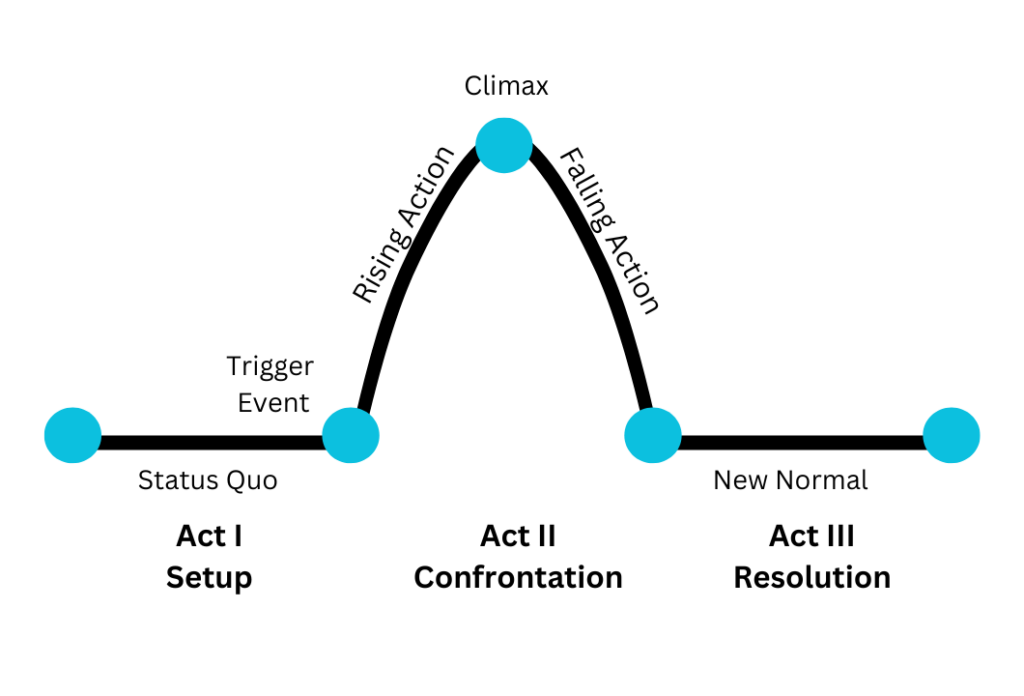
Most case studies die by a thousand tiny cuts.
A forced mention of a feature here, an out-of-context metric there… until your story is a hot mess of disembodied quotes and company boilerplate.
What you need is a solid foundation you can use to:
→ Structure your customer interview
→ Align with stakeholders early (and argue against them later)
→ Outline your story
The simplest structure for a story is the 3-Act Story Structure, a storytelling pattern popularized by screenwriter Syd Field.
With this structure, you can make better choices about:
- The unique story angle to focus on
- What details you should and shouldn’t include
- How to sequence the events of your story
Here’s how you can apply it to your next customer story:
Act I: Introduction
Purpose: Set the scene; make a promise; kickstart the story.
A good case study introduction orients your reader and creates tension by:
- Framing a problem
- Highlighting an outcome
Framing the problem requires detailing the specific problem your customer faced, its cause, and result(s).
This is the initial scene — the status quo. If successful, the reader knows the story is (or isn’t) relevant to them. If unsuccessful, the reader isn’t sure.
(I wrote more about this in my post about writing compelling case study introductions.)
To highlight an outcome, you flash-forward to a desirable result of solving the problem.
This creates the initial tension that kickstarts the story. The reader wants to know how the customer got from problem to outcome.
Act II: Confrontation
Purpose: Raise the stakes.
Act two begins with an inciting incident — something that made the customer search for a solution.
The customer faces obstacles as they determine their decision criteria (implicit or explicit) and make a decision.
Stakes rise further when the customer makes their decision and faces obstacles (internal or external) during onboarding.
Act III: Resolution
Purpose: Release tension; clarify events; return to a “new normal”.
The story climaxes when the customer’s decision to purchase is fully validated. They’ve realized the value of the solution and solved their initial problem.
The story may wind down with less crucial solutions to problems as the product is fully implemented and/or the customer finds new use cases or opportunities.
The End
To finish up you can provide a glimpse into the customer’s new life, promote your solution with a call-to-action, and end with a broad quote from the customer.
P.S. If you’re a one-person marketing team and want a case study writer to transform your customers’ successes into written case studies, short-form video clips, and social media posts so you can supply your sales team with content they can’t wait to use, send me an email.

